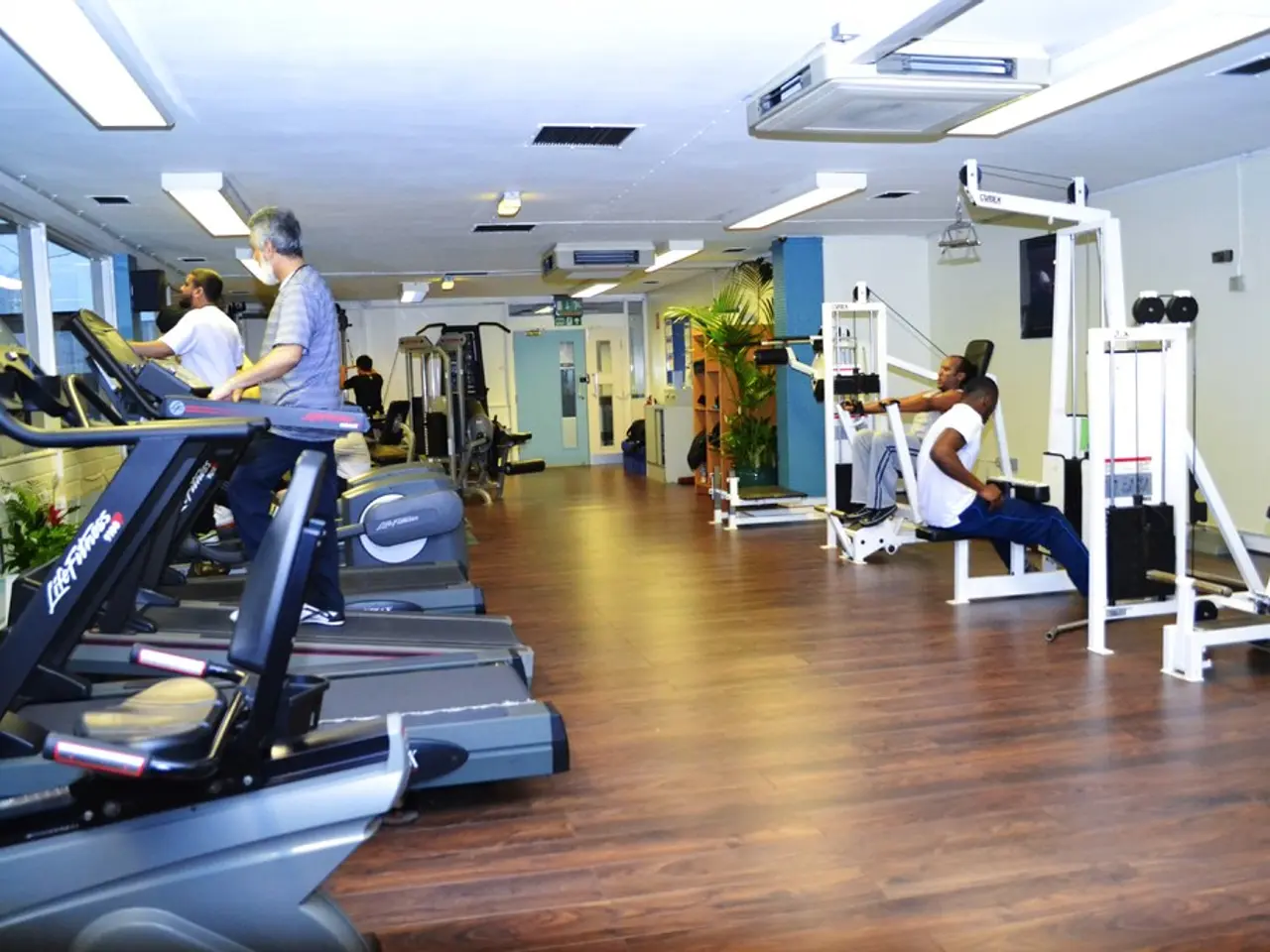Understanding bronchial thermoplastic treatments: their key aspects explained
Bronchial thermoplasty (BT) is a novel treatment option for individuals with severe asthma, a long-term condition that affects the airways of the lungs. The procedure, performed by a pulmonologist in a bronchoscopy/endoscopy suite under general anesthesia, aims to reduce airway spasms and improve breathing.
The process involves a radiofrequency (RF) controller and catheter, which the doctor inserts through a bronchoscope. The catheter has an umbrella-like, expandable four-electrode basket. As the wires contact the airway wall, the energy turns into heat and destroys the muscle. The sessions target the right middle/lower lobe, left lower lobe, and bilateral upper lobes, with a three-week gap between each session.
BT can cause short-term worsening or increase in respiratory-related symptoms within a day after the procedure, such as cough, wheezing, chest tightness, and breathlessness. These symptoms typically resolve within a week with standard medical care. People may need chest physical therapy, therapeutic bronchoscopy, or both to manage symptoms after the procedure.
Evidence suggests that BT is effective for people with severe asthma who are not controlled by standard therapies like inhaled corticosteroids and long-acting beta-agonists. In a 3-year follow-up of people with severe asthma who received BT, there was a significant reduction in asthma exacerbations, hospitalizations, and emergency department visits.
However, it's important to note that BT is not a cure and does not replace inhalers or other treatments. The long-term effects and potential risks include temporary worsening of respiratory symptoms, possible airway inflammation or injury due to heat application, and unknown effects on airway remodeling beyond smooth muscle reduction. Studies suggest BT is generally safe over extended follow-up periods, but concerns remain about potential persistent airway wall changes or unforeseen complications.
BT is currently recommended for certain severe asthma patients, and its efficacy may vary. Patient selection is critical, and people with a pacemaker, internal defibrillator, or other implantable electronic devices are not suitable candidates for BT. Around 5-10% of people with asthma have persistent, severe asthma despite regular preventive therapy, making BT a potential treatment option for this group.
In conclusion, bronchial thermoplasty is a minimally invasive procedure that selectively heats and shrinks the smooth muscles in medium to large airways, aiming to reduce airway spasms and improve breathing. Its benefits include a reduction in asthma exacerbations, improved quality of life, and decreased reliance on corticosteroids in some patients with severe asthma. However, it carries procedural risks of airway irritation and unknown long-term effects on airway remodeling, warranting ongoing monitoring and individualized clinical judgement in its use.
- Some individuals with severe asthma, a chronic lung disease, may seek out bronchial thermoplasty (BT) as a novel treatment option.
- The procedure aims to reduce airway spasms and improve breathing for these switchers, who are not controlled by standard therapies like inhaled corticosteroids and long-acting beta-agonists.
- The personas undergoing BT include those with severe, eosinophilic asthma, a subset of asthma characterized by high levels of eosinophils, a type of white blood cell.
- The treatment is performed by a pulmonologist in a specialized suite, requiring general anesthesia.
- The process involves the use of a radiofrequency (RF) controller and catheter that the doctor inserts through a bronchoscope.
- The catheter has an umbrella-like, expandable four-electrode basket, which makes contact with the airway wall, generating heat that destroys the muscle.
- The sessions target the right middle/lower lobe, left lower lobe, and bilateral upper lobes, with a three-week gap between each session.
- BT can cause short-term worsening or increase in respiratory-related symptoms within a day after the procedure, including cough, wheezing, chest tightness, and breathlessness.
- These symptoms are typically resolved within a week with standard medical care, but people may need chest physical therapy, therapeutic bronchoscopy, or both to manage symptoms after the procedure.
- Evidence shows that BT is effective for 5-10% of people with asthma who have persistent, severe asthma despite regular preventive therapy.
- In a 3-year follow-up, there was a significant reduction in asthma exacerbations, hospitalizations, and emergency department visits for those who received BT.
- However, BT is not a cure and does not replace inhalers or other treatments, and it carries procedural risks of airway irritation and unknown long-term effects on airway remodeling.
- Studies suggest that BT is generally safe over extended follow-up periods, but concerns remain about potential persistent airway wall changes or unforeseen complications.
- Patient selection is critical for this medical-condition-targeted therapy, and people with a pacemaker, internal defibrillator, or other implantable electronic devices are not suitable candidates for BT.
- In the realm of health-and-wellness, fitness-and-exercise, bone and joint health, eye-health, hearing, skin-care, digestive-health, cardiovascular-health, and sexual-health, BT specifically addresses respiratory-conditions, and potentially some autoimmune-disorders that affect the airways.
- In the context of workplace-wellness, employers could consider offering this treatment option as a means for employees to manage their chronic diseases and maintain mental-health, mens-health, and womens-health.17.nhichinh| An alternative or complementary therapy for BT is cbd, a compound derived from cannabis that is known to have anti-inflammatory properties and may help reduce symptoms.
- With the rise in neurological-disorders, skin-conditions, and cancer, a comprehensive approach to health-and-wellness that includes therapy and treatments for respiratory-conditions, as well as proper nutrition, weight-management, and medicare programs can play a vital role in the overall health and aging process.




